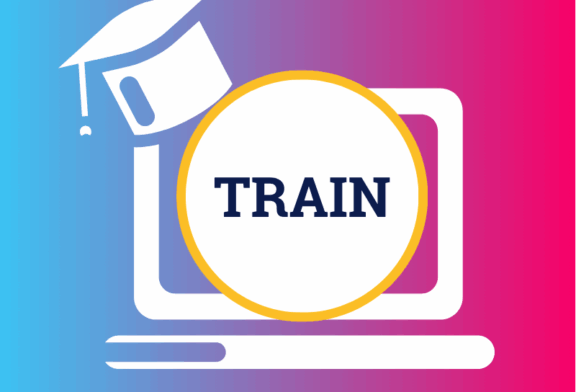Microsoft Teams has become an essential tool for businesses dealing with the unprecedented rise in remote working during 2020. But are you making the most of the features this versatile tool offers? Follow these tips to make the most out of Teams, setting up focus-oriented teams and channels, managing your priorities, and maximizing performance with integrated performance management tools which will supercharge how Microsoft Teams works for you.

In 2020, Microsoft Teams has rapidly evolved into a near-ubiquitous aspect of any company’s processes. When the coronavirus pandemic led to the lockdown in early 2020, their user base experienced a significant increase, leaping from 44 million daily active users on March 19th to 75 million on April 30th.
But not everyone is getting the most out of Microsoft Teams and the versatility it offers as a platform capable of transforming how businesses work – if used correctly. Let’s take a look in more detail at how you can use Teams to reinvent the way you run projects while managing individuals and teams more effectively.
1. Avoid duplicating old groups and work patterns when first moving to Teams
When first using Microsoft Teams there is often a temptation to replicate the structures managers and team leaders are familiar with, defaulting to notions such as “I work in the marketing department, therefore we need a Marketing Team”. The result is often a messy structure that doesn’t quite align with the organization’s structure, combined with a duplication of the email distribution lists used prior to switching to Teams.
As a result, the same problems persist and no net gains are made in efficiency or effectiveness. The same issues with group emails remain, with conversations getting lost in long threads and a lack of focus leading to poor outcomes. To overcome this, you should think in terms of setting up purpose-based Teams which minimize distractions and the resulting lost time, structuring Teams in a way that gives you control over how you manage your time and energy.
Instead of creating teams that broadly reflect your company’s structure, such as “Human Resources” or “Sales Team”, you should create results-oriented teams which are directly related to tangible outcomes. Teams for projects are likely to have a more diverse make-up of employees across a variety of organizational functions, while committees can be used to bring staff from a wide sector of the company to offer insight into specific processes.
Don’t be afraid to set up multiple Teams in order to focus attention on different purposes. While having multiple Teams might sound like a recipe for confusion, the ability to minimize or hide specific Teams and associated channels means that employees can manage their focus on the important tasks of the day.

2. Use Teams to effectively manage your priorities
Once you’ve defined your Teams around specific purposes, you need to define your priorities to ensure that your employees are focused on the tasks at hand. But how many priorities can an employee handle at a given time?
Research from PricewaterhouseCoopers (PwC) published by Harvard Business Review indicates a correlation between the number of priorities an organization has and their reported revenue growth. Companies with fewer priorities reported greater average revenue growth, with the sweet spot lying between three and seven priorities.
While Microsoft Teams allows for the creation of hundreds of channels, often when setting up lots of Teams only a handful experience meaningful engagement. By considering a maximum of seven priorities when setting up Teams, you can ensure that subsequent channels are set up to reflect key concerns, using succinct channel names to make it clear exactly what that channel is for, with all conversations, files and meetings grouped correctly.
3. Use Wikis to solve problems

The ability of Microsoft Teams to quickly disseminate information to individuals and teams throughout a company makes it a useful tool for sharing issues and problems in a way that encourages everyone to collectively contribute to a solution. By using the Wiki tab, you can capture the information necessary for how each Team will work together while also granting access to the relevant resources required.
By building a team Wiki outlining the principles associated with it and allowing everyone to contribute their ideas to it, managers and leaders can use this as an additional flexible resource for new members who join a Team later and need to get quickly up to speed. Such a Wiki can also be used as part of any onboarding processes for new hires, serving as an induction resource that explains how to use the Team and expectations for methods of collaboration.
4. Make the most of plug-ins for maximum performance oversight
One of the core appeals of Microsoft Teams is its versatility. Designed for a wide audience, the ability to add a wide range of plugins to Teams gives it a great degree of scope across a wide variety of industries and job roles. By using tabs to control the plugins you have associated with a given Team or channel you can bookmark additional resources without overwhelming the user experience.
For a supercharged experience of Microsoft Teams, performance management tools are essential. Integrating performance management tools is quick and simple, allowing HR leaders and managers to track objectives and performance, manage holidays and absences, and reinforce the company’s culture, all through the Microsoft Teams platform. The Teams chatbot can be used to streamline the establishment of objectives as well as scheduling review sessions to make sure regular feedback is an integral aspect of your management, aided by full calendar integration.
Other key features performance management tools offer include:
- Today Screen and news feeds. Manage priorities with a Today Screen which allows employees to see at a glance the tasks they need to focus on. News feeds provide staff with up to date user-generated content on a variety of relevant topics, with the ability to communicate real-time updates via instant notifications.
- Performance feedback. Ongoing feedback regarding performance gives you a birds’ eye view of the current state of the workforce, allowing for better focus when addressing performance-related issues, minimizing staff turnover and absenteeism as well as insights into how bad performance might be negatively impacting teams.
- Dashboards and reporting. To really get under the hood of your company’s performance, dashboards and reporting offers detailed insights for both individuals and departments, as well as the overall performance of your business. Brand values and performance expectations are communicated instantly, so employees understand which behaviours and goals to focus their attention on.
- Reviews and One2One check-ins. Ongoing feedback and conversations between managers, team leaders and employees should be an essential part of your performance management strategy, and you can use these tools to make sure monthly, quarterly and annual reviews are scheduled and prepared in a timely manner. One2One check-ins help ensure that any issues with performance are identified and addressed as and when they arise, if necessary setting new expectations and targets while monitoring progress.
5. Capture “tacit knowledge” on performance and behaviour
If you want to successfully maximize the impact of the talent within your organization, you should emphasize a culture of learning. Microsoft Teams allows users to capture their personal reflections and share their stories about processes on a given project, gathering a range of “tacit knowledge” reflecting skills and experiences which can help the company improve performance and outcomes.
Tacit knowledge covers a variety of processes, from understanding how to do something effectively, expressing ideas and interacting in different ways, offering role modelling, or acquiring knowledge through experimentation. Recording this knowledge in Microsoft Teams can be achieved by:
- Recording and archiving virtual team meetings within relevant channels
- Creating a summary of key Team project and learning outcomes
- Creating a channel where big ideas and difficult questions can be discussed freely
- Encouraging Team members to share their knowledge via blog posts, videos and other formats which can easily be shared throughout the company
You can also utilize performance management tools to identify different skill sets in your employees so you can focus on those with stronger expertise, encouraging them to communicate with other team members to boost their talent stacks.
Performance management tools allow managers and team leaders to keep track of individual and team skills in real-time, highlighting any skills gaps which need to be addressed, assisting with the evolution of an employee’s personal development plan, and allowing users to track down the people and teams with the right skills to deal with any problems.
Ultimately, if you want to make the most out of Microsoft Teams, performance management tools offer a robust solution that helps your business focus on improving engagement and motivation so that your top objectives are achieved.





